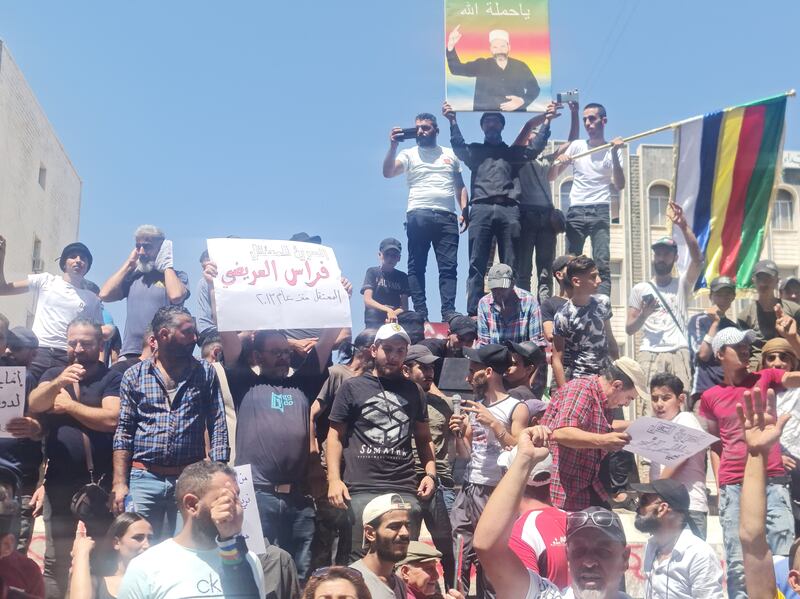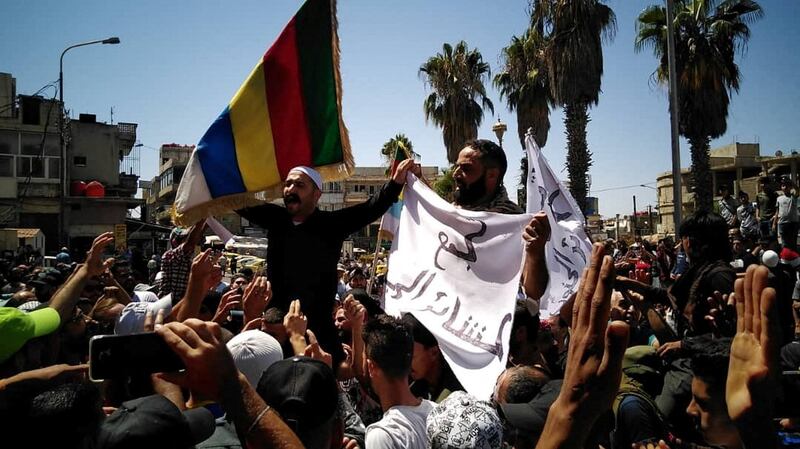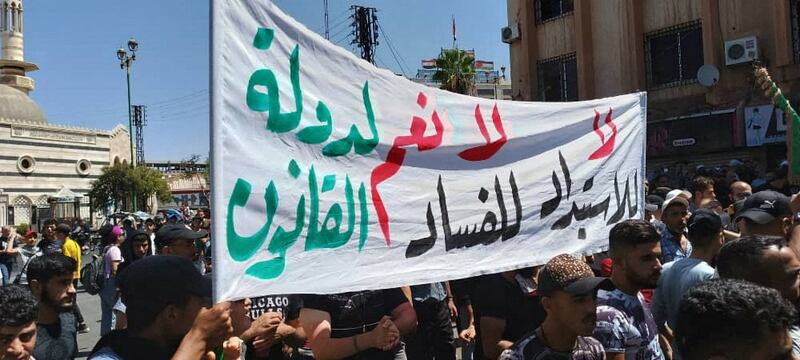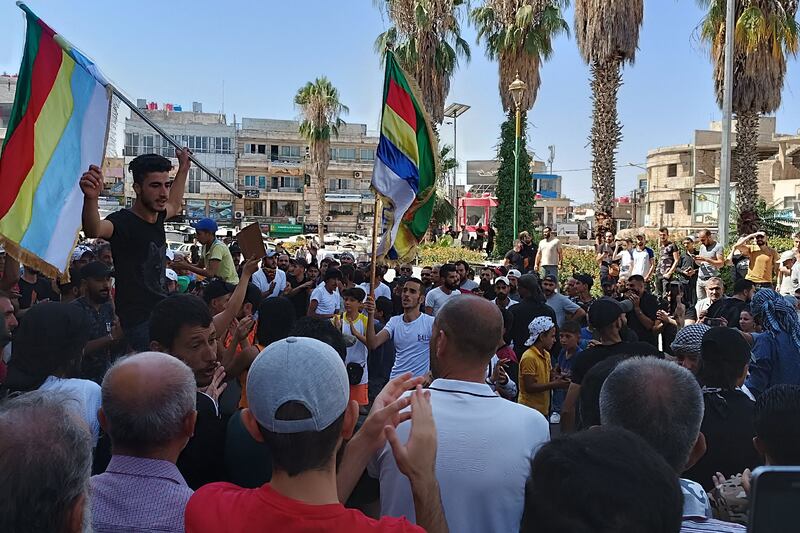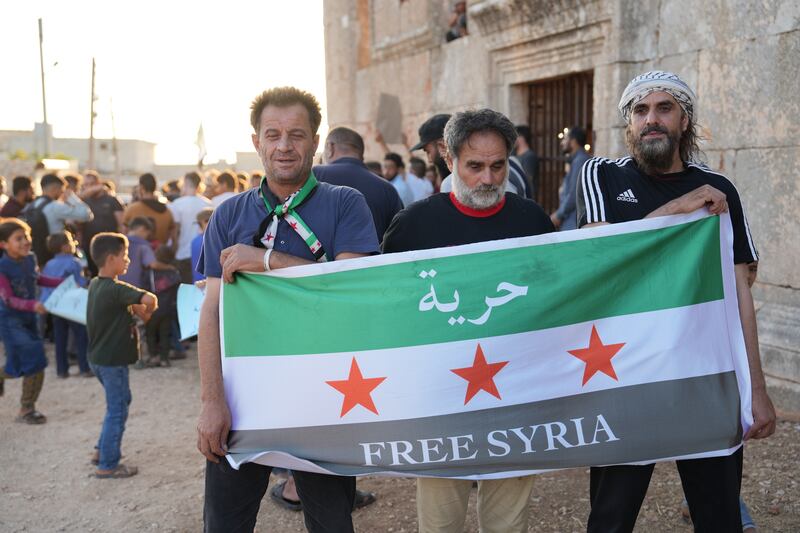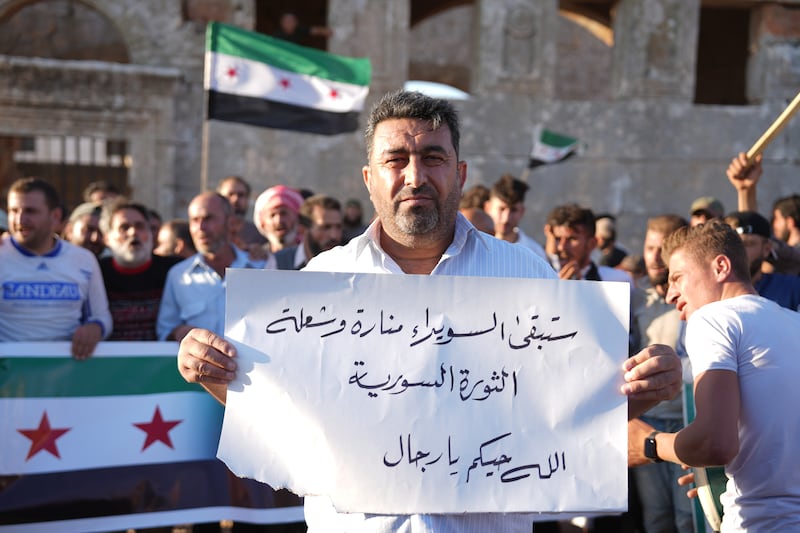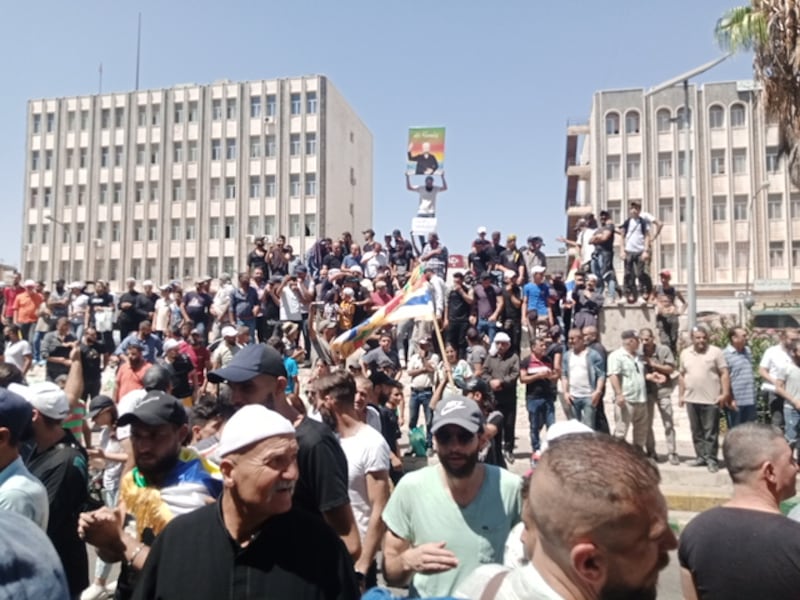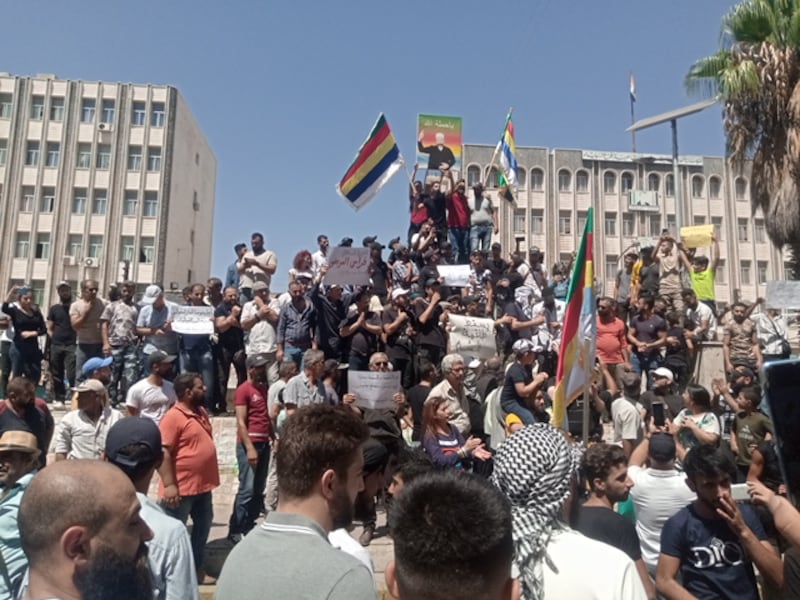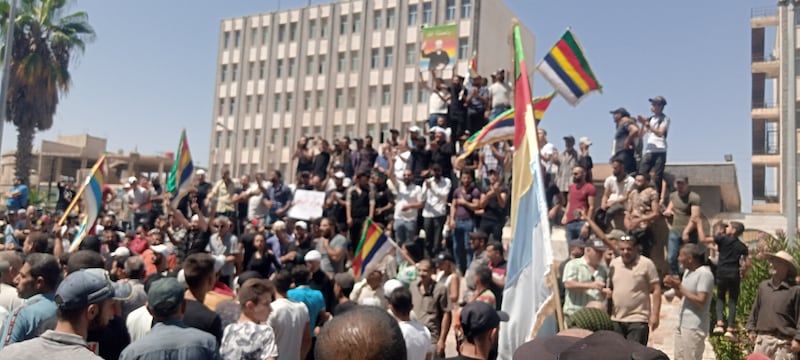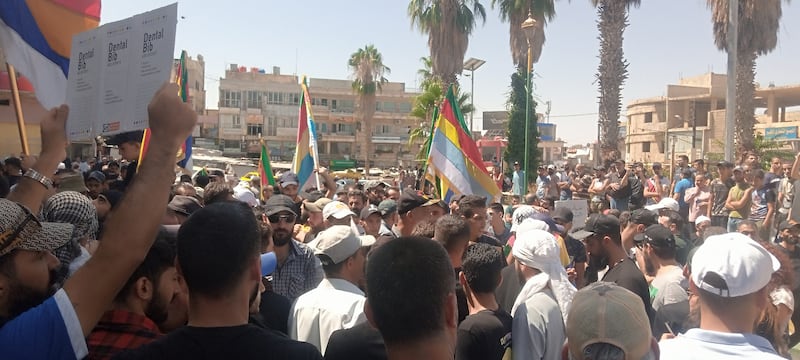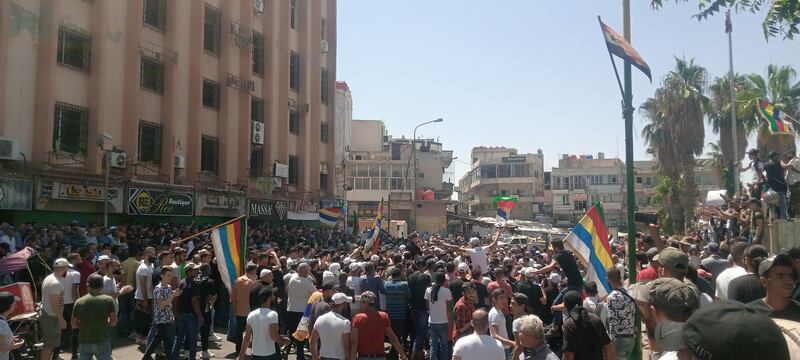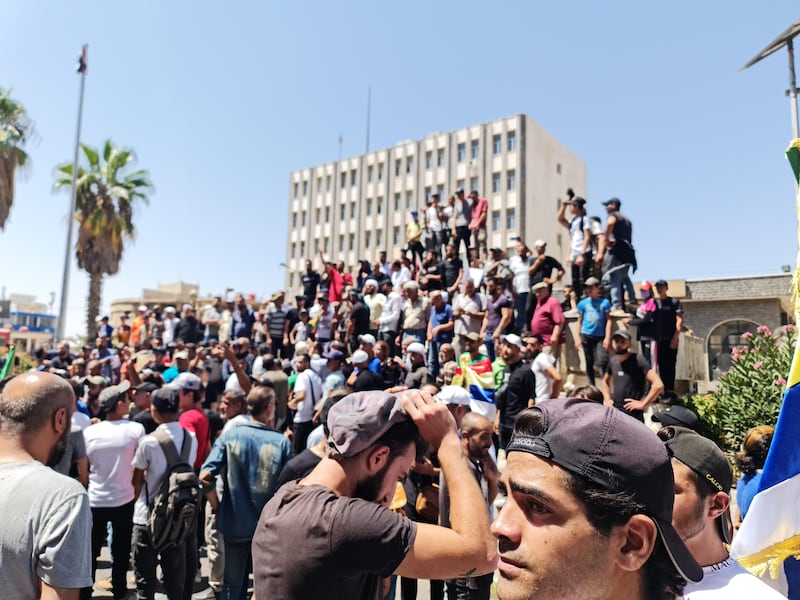Mostly Druze masses in Syria's Suweida governorate resurrected chants of the 2011 revolt against President Bashar Al Assad on Thursday, in the most sustained opposition street movement for eight years.
The demonstrations were the first sizeable challenge directly to the president in areas traditionally perceived as loyalist since the 2015 Russian intervention on his side in the civil war.
The unrest started on Sunday, days after a steep rise in fuel prices.
Footage tweeted by residents purportedly showed people in the central square of the provincial capital of Suweida chanting “Hey, hey God. Bashar gets booted out” as women among them ululated.
“By right, by providence, we want the detainees,” the mostly young people shouted, recalling the first demonstration in Damascus’s Marjeh Square, which ushered the revolt and the eventual fragmentation of the country.
On March 16, 2011, a crowd of mostly women staged a sit-in at the square to demand the release of political prisoners in Syria, before many were beaten and rounded up by secret police.
The pro-democracy street movement that followed was crushed by force, prompting a violent backlash by members of the Sunni majority who comprised its backbone. By the end of the year, the revolt had militarised and Syria was in civil war.
The authorities employed far less force on the streets in Suweida and other areas inhabited by minorities as the largest demonstrations occurred in mostly Sunni regions.
De facto autonomy
Suweida, an agricultural area on the border of Jordan, carved a degree of autonomy from Damascus as the regime refrained from persecuting young men who dodged conscription, afraid of being killed in fighting in the war.
The bulk of those killed on the president's side came from the coastal Alawite mountains, inhabited by members of Mr Assad’s own sect.
But discontent on the coast has risen as the deterioration in the economy accelerated in the past three years, driven by the the financial meltdown in Lebanon, traditionally the economic lung of socialist Baathist Syria.
“Syria is one, one. A salute to Jableh and Tartous,” the crowd in Suweida chanted, referring to Alawite areas.
"Falling falling falling, Bashar Al Assad is falling," was another slogan.
In signs that an alliance of ethnic and religious minorities that has helped sustain Mr Assad in the war could be eroding, a delegation of tribal Sunnis from outlying areas of Suweida purportedly joined the demonstration.
“We do not kneel except to God,” young Druze shouted as they greeted them, the footage showed.
Disputes over land between the two sides have marked in the last two centuries the history of Suweida, to where Druze fled amid upheaval in Lebanon in the 19th century. The disputes became more violent since 2011, as central authority all but disappeared.
In Damascus, Luna Al Shebel, a Druze aid to Mr Assad ,wrote on Facebook on Thursday that the Suweida demonstrators are taking orders “from the same side" that the has supported ISIS and Nusra Front, a defunct branch of Al Qaeda.
It was an apparent reference to Turkey.
She said Suweida has enough “honourable men” to expel those whom she described as undermining the unity of Syria.
A balance of power has held Suweida between pro and ani-regime militias since the Druze started arming in the past decade.
